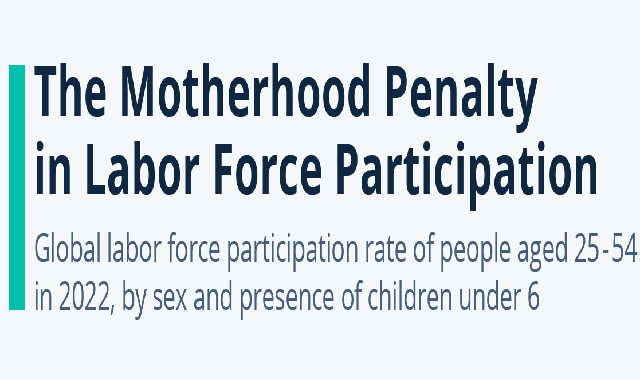Although it may appear that participation of women in the labor force has increased significantly in recent times, but that is not the case – at least not at the global level. Even though the labor force participation rate for women aged 25-54 has undeniably increased from 67 percent in 1990 to 77 percent in 2021 in high-income countries, situation looks quite differently in all other income groups. According to estimates from the International Labour Organization (ILO), only 61.4 percent of women in prime working age were either employed or actively seeking employment globally in 2022, which is actually a small decline from 62.8 percent in 1990.
Furthermore, there is still a major gender gap in labor force participation rates, with women often facing challenges that their male colleagues do not. According to the ILO, the gender gap stood at 29.2 percentage points in 2022, and child-rearing being a major factor to lower women’s labor force participation. As the Infographic suggests, the labor force participation gap extends to 42.6 percentage points for couple households having at least one child under six due to the so-called "motherhood penalty." The term “motherhood penalty” refers to the undesirable impact that having children can have on a woman's career.
Not only are women largely responsible for providing
care-giving facilities in many families and cultures, but they also face
discrimination and bias when it comes to getting hired, being promoted, and also
the pay scales are usually different for male and female employees. While
having to balance care-giving and professional responsibilities is hard enough,
it is made even harder by such hurdles, which is why flexible work arrangements
and other policies such as paid parental leave are critical to encourage
mothers to stay in or re-join the workforce after giving birth.
While the ILO summaries that the motherhood penalty can be witnessed
across all regions and income groups, there are differences in its level. While
mothers are nearly 20 percent less likely to be part of the labor force than
women of the same age group are overall, the penalty is considerably lesser in
lower-middle-income and low-income countries at 4.3 and 5.4 percent,
respectively. Interestingly, the opposite can be observed for men, who are more
likely to be in the labor force when they have a child under six. This
“paternity premium” contributes to an even broader labor force participation
gap among parents.
Infographic by: Statista


